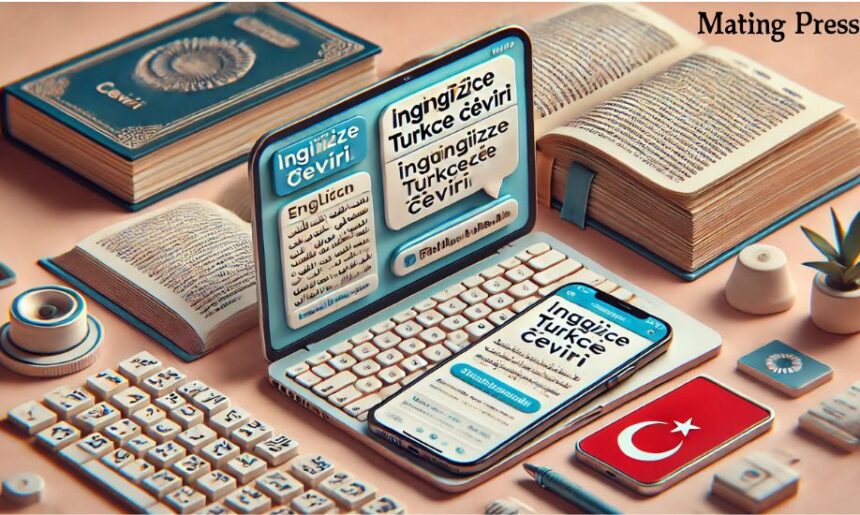In today’s globalized world, communication across languages is more important than ever. One of the most common translation needs involves English and Turkish, two languages with significant linguistic differences. The process of translating from English to Turkish, or “ingingilizce türkçe çeviri,” is essential for businesses, travelers, students, and anyone navigating between these two cultures. This article explores the various facets of “ingingilizce türkçe çeviri,” shedding light on the best practices, challenges, and tools available for seamless translation.
The Importance of ingingilizce türkçe çeviri
English and Turkish are spoken by millions of people worldwide. English is a dominant global language used in business, technology, and science, while Turkish holds strong cultural significance in regions like Turkey, Cyprus, and parts of the Balkans. As global interactions increase, the need for accurate English to Turkish translations, or “ingingilizce türkçe çeviri,” has grown substantially. Whether it’s for translating documents, websites, or personal communications, mastering this translation process ensures clear communication and avoids misunderstandings.
The blog site mating press often highlights the significance of cross-cultural communication, and understanding how to properly translate between English and Turkish is key in these exchanges.
Tools for Accurate ingingilizce türkçe çeviri
Several tools offer support in “ingingilizce türkçe çeviri.” Among the most widely used options are machine translation services like Bing Translator and Microsoft Translator. These tools are particularly useful for quick translations of short texts, offering features such as real-time translations, voice recognition, and tone selection (casual, formal, or standard).
However, it’s important to recognize the limitations of automated translators. While they provide useful starting points for basic translation, human translators are often necessary for more nuanced or specialized texts, ensuring the meaning, tone, and context remain intact. For complex translations, relying solely on machine tools can result in errors, especially when dealing with idiomatic expressions and cultural subtleties that are hard to translate directly.
Common Challenges in ingingilizce türkçe çeviri
Despite the tools available, “ingingilizce türkçe çeviri” presents several challenges. One of the main obstacles is the structural difference between English and Turkish. Turkish is an agglutinative language, which means words are often formed by adding multiple suffixes to a root word. In contrast, English uses more fixed structures with a heavy reliance on word order. This difference can make direct translations tricky, as a phrase that works in English might become confusing or ambiguous in Turkish.
Another challenge in “ingingilizce türkçe çeviri” is translating idiomatic expressions. English is full of idioms and phrases that do not have direct Turkish equivalents. For instance, the phrase “it’s raining cats and dogs” would not make sense if translated word-for-word into Turkish. Skilled translators must find culturally appropriate equivalents or rephrase such idioms in a way that retains the original meaning.
The blog site mating press emphasizes how cultural differences play a vital role in effective communication, making it clear that translation goes beyond word-for-word substitution.
Best Practices for Effective ingingilizce türkçe çeviri
To achieve accurate “ingingilizce türkçe çeviri,” following certain best practices is crucial:
- Understand the Context: Always begin by understanding the full context of the text. Whether you are translating a casual conversation or a formal document, knowing the intent of the communication helps ensure the translation is accurate and appropriate.
- Focus on Meaning, Not Just Words: Translation is more about conveying meaning than translating each word individually. Especially with “ingingilizce türkçe çeviri,” focusing on how the sentence would naturally be expressed in Turkish ensures the translation feels authentic.
- Avoid Literal Translations: While it may be tempting to translate word-for-word, this often results in clunky and confusing text. Instead, consider how a Turkish speaker would express the same idea.
- Use Glossaries and Specialized Resources: If translating technical or industry-specific content, it’s helpful to use glossaries and specialized dictionaries. This ensures consistency in terminology and helps avoid misunderstandings.
- Proofread and Revise: Once the initial translation is complete, go through the text again to check for fluency, accuracy, and any potential cultural missteps. Proofreading helps eliminate awkward phrasing and ensures the final product reads smoothly.
Cultural Considerations in ingingilizce türkçe çeviri
One of the most fascinating aspects of translation is the need to account for cultural differences. In “ingingilizce türkçe çeviri,” it is essential to recognize that certain concepts and ideas may not exist in the target language, or they might carry different connotations. For example, the way humor, politeness, and formality are expressed in Turkish differs from English. A direct translation might come across as too blunt or overly formal, depending on the audience.
This is why skilled translators are not just linguists but also cultural mediators. They ensure that the tone and style of the translation align with the cultural expectations of the Turkish-speaking audience.
As highlighted by mating press, translations are a bridge between languages and cultures, allowing individuals to connect and understand one another across linguistic boundaries.
Professional Translation Services for ingingilizce türkçe çeviri
For businesses, legal entities, or academic institutions, professional translation services are often necessary for high-stakes projects. While tools like Bing Translator and Google Translate are useful for personal use, professional translators bring the expertise needed for technical accuracy, cultural relevance, and maintaining a consistent tone.
Translation agencies offer specialized services, such as legal, medical, and technical translations, where even minor errors could have serious consequences. Whether it’s a business contract or a scientific paper, ensuring the translation is precise and culturally appropriate is essential. In such cases, investing in professional “ingingilizce türkçe çeviri” services is worthwhile.
Conclusion: The Future of ingingilizce türkçe çeviri
As technology continues to evolve, the future of “ingingilizce türkçe çeviri” looks promising. Advances in machine learning and artificial intelligence are improving the accuracy of automated translators, though they are still far from replacing human expertise. In particular, areas such as natural language processing and deep learning are helping machines better understand context and nuance, which are critical in translation.
However, despite these technological advancements, human translators will remain indispensable for the foreseeable future. Only they can fully grasp the subtleties of language and culture, ensuring that translations are not only accurate but also meaningful.
In the world of translation, mating press reminds us that language is more than just words—it’s about understanding, connection, and the shared human experience.
By using the right tools, understanding cultural nuances, and following best practices, anyone can achieve effective “ingingilizce türkçe çeviri,” whether for personal, professional, or creative purposes.





